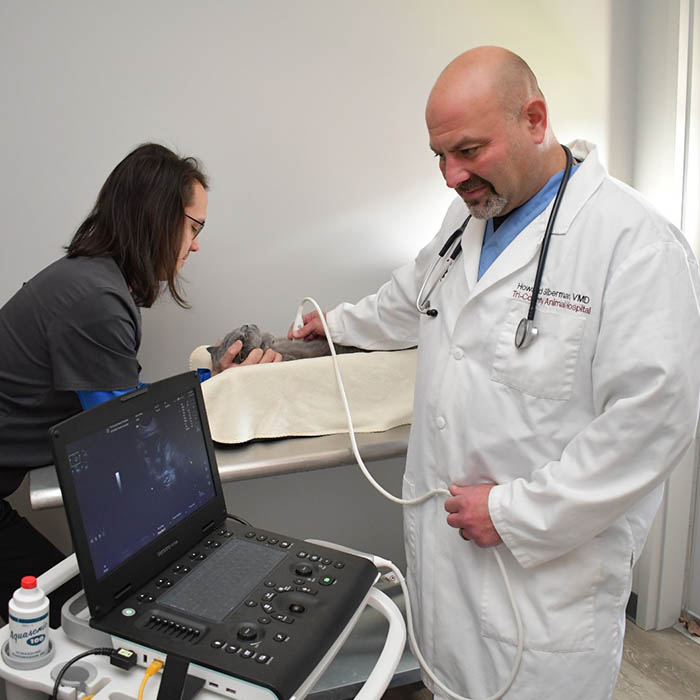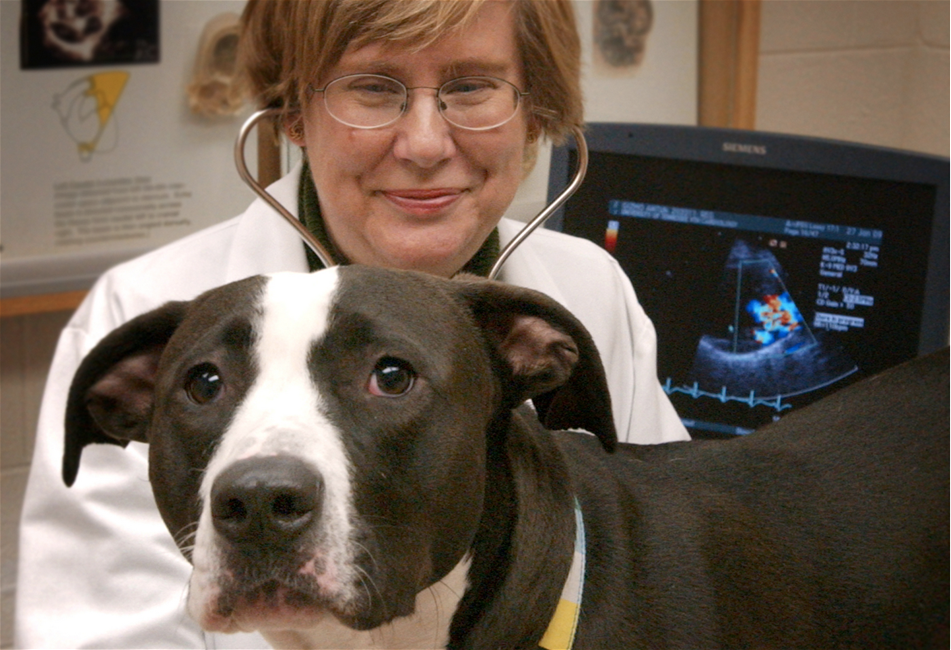What Are CT Scans For Animals, and When Are They Needed?}
What You Required to Find Out About Vet Solutions: A Review of Diagnostic Tools and Procedures
Veterinary solutions play a vital function in keeping the health and wellness of pet dogs. Routine exams can disclose hidden health worries beforehand. Numerous diagnostic tools and treatments, such as blood tests and imaging methods, supply important understandings into a pet's well-being. Understanding these techniques is crucial for animal owners. What details diagnostic treatments are most generally utilized, and exactly how can they influence a pet dog's treatment plan?
Value of Normal Vet Exams
While numerous pet dog owners might take too lightly the importance of routine vet examinations, these visits are important for keeping a pet's overall wellness. Routine check outs to the vet enable early discovery of prospective health and wellness concerns prior to they rise into severe issues. Normal check-ups typically include inoculations, which are very important for avoiding contagious illness that could severely impact a pet's well-being. Furthermore, these appointments supply a possibility for vets to examine the pet's weight, oral health and wellness, and overall condition, guaranteeing that the animal is thriving. During these sees, animal proprietors can likewise get beneficial advice on diet plan, workout, and precautionary care tailored to their particular animal's demands.
Usual Diagnostic Treatments in Vet Medicine
In veterinary medicine, exact medical diagnosis is essential for efficient treatment. Typical analysis procedures consist of blood screening methods, advanced imaging innovations, and urinalysis, each playing a significant role in identifying wellness concerns. Comprehending these methods improves the capability to give suitable look after pet clients.
Blood Evaluating Methods
Blood screening techniques function as vital diagnostic devices in vet medicine, allowing veterinarians to assess the health and wellness of animals precisely. These methods entail collecting blood samples to examine different parts, such as white and red blood cells, platelets, and biochemical markers. Common tests consist of total blood counts (CBC), which evaluate total wellness and identify infections, and biochemical panels, which analyze organ function and metabolic condition. Additionally, serological tests can identify particular conditions with antibody detection. Blood testing is minimally invasive and provides crucial information that assists in diagnosing problems, monitoring wellness standing, and evaluating reactions to treatments. Overall, these strategies play an essential duty in ensuring ideal take care of pets and livestock alike.
Imaging Technologies Used
Diagnostic imaging innovations are essential tools in vet medicine, matching blood testing strategies by offering aesthetic insights right into an animal's interior structures. Common imaging techniques consist of X-rays, which are helpful for reviewing bone cracks and discovering international things, and ultrasound, which allows for real-time visualization of soft cells and body organs. Magnetic resonance imaging (MRI) offers detailed pictures of complex physiological areas, particularly in neurological assessments. Computed tomography (CT) supplies cross-sectional images, enhancing analysis precision for various problems. Each of these modern technologies aids vets in detecting diseases, preparing therapies, and keeping an eye on recovery. By including imaging innovations, vet experts can better assess an animal's health and wellness and make educated decisions concerning their treatment.
Urinalysis and Diagnostics
Urinalysis functions as an essential diagnostic device in vet medicine, offering important understandings right into an animal's total wellness and assisting in the detection of different problems. This non-invasive treatment examines pee examples to assess kidney feature, hydration status, and metabolic conditions. Common components examined include certain gravity, pH degrees, glucose, healthy proteins, and the presence of blood or bacteria. Irregular searchings for can show concerns such as urinary system infections, diabetic issues mellitus, or kidney disease. To boost analysis accuracy, urinalysis is often done combined with various other examinations, such as blood work and imaging studies. Early discovery via urinalysis can cause timely treatments, boosting the prognosis for lots of veterinary individuals. It is a crucial element of extensive veterinary treatment.
Understanding Blood Examinations and Laboratory Analysis
Recognizing blood tests and laboratory evaluation is essential in vet medicine as it assists in detecting various wellness conditions in pets. Different types of blood examinations give vital info concerning a pet's interior state, while analyzing lab results requires mindful consideration of various aspects. This area will explore the sorts of blood tests readily available and the value of their outcomes.
Kinds of Blood Tests
Blood tests play an essential role in vet medication, supplying important insights into an animal's health and wellness condition. Numerous sorts of blood examinations are utilized, each serving different functions. Total blood matters (CBC) evaluate total health and wellness and spot conditions such as anemia or infection. Biochemical accounts assess organ function by gauging enzymes and electrolytes, using insights into metabolic wellness. Serological tests identify details antibodies or virus, aiding in the diagnosis of infections or autoimmune diseases. Blood typing warranties risk-free transfusions, while coagulation tests assess the blood's ability to clot, important for surgeries. These examinations jointly enhance medical diagnosis, therapy planning, and surveillance of an animal's health, highlighting the value of comprehensive lab evaluation in vet care.

Translating Lab Outcomes
An extensive evaluation of lab outcomes is vital for precise medical diagnosis and treatment in vet medicine. Translating lab results needs an understanding of normal referral arrays and the relevance of deviations. Blood examinations can expose numerous health signs, such as organ feature, electrolyte equilibrium, and the existence of infections. Vets must take into consideration the whole medical picture, including the pet's history, physical exam searchings for, and any type of symptoms provided. Variations in outcomes might emerge from factors such as age, type, and underlying wellness conditions. Lab outcomes should not CT Scans For Dogs be viewed in seclusion but rather as part of an all-encompassing diagnostic strategy. Accurate analysis allows for customized therapy plans and far better end results for veterinary individuals.
Imaging Techniques: X-rays, Ultrasounds, and Beyond
Imaging methods are vital tools in vet medication, supplying crucial insights into the health and wellness and health of animals. Amongst the most frequently made use of methods are Ultrasounds and x-rays. X-rays are invaluable for picturing bone frameworks, helping vets recognize fractures, tumors, or foreign objects. This technique is non-invasive and fast, making it suitable for urgent situations.Ultrasounds, on the other hand, use audio waves to develop pictures of soft cells and body organs. This technique is specifically valuable for analyzing the heart, abdominal area, and reproductive body organs, allowing veterinarians to assess problems like fluid buildup or organ abnormalities.Beyond X-rays and ultrasounds, progressed imaging techniques such as computed tomography (CT) and magnetic resonance imaging (MRI) are significantly utilized in vet technique. These methods provide thorough cross-sectional images, enhancing the accuracy of diagnoses and treatment plans. CT Scans For Dogs. Generally, imaging techniques play a vital role in ensuring reliable veterinary care
The Function of Biopsies in Diagnosing Animal Health And Wellness Issues
Precision in identifying wellness problems in pet dogs commonly hinges on using biopsies, which supply definitive info concerning tissue problems. A biopsy entails the removal of a little example of tissue for examination under a microscope, permitting veterinarians to determine different conditions, consisting of infections, growths, and inflammatory illness. This diagnostic device is crucial for comparing benign and malignant developments, assisting treatment decisions, and assessing the severity of a condition.Biopsies can be performed making use of numerous methods, such as needle goal, incisional biopsies, or excisional biopsies, relying on the area and sort of tissue included. The choice of approach may impact recovery time and the quantity of cells gathered. Ultimately, the info amassed from a biopsy can bring about targeted therapies, improving end results for family pets facing serious wellness challenges. Veterinarians highlight the importance of this procedure in accomplishing accurate medical diagnoses and efficient treatment strategies.
Advanced Diagnostic Devices: Endoscopy and CT Scans

Advanced analysis tools, such as endoscopy and CT scans, play a crucial duty in modern vet medicine, offering non-invasive approaches to envision inner structures and detect numerous conditions in family pets. Endoscopy involves making use of a versatile tube outfitted with an electronic camera, permitting veterinarians to check out the intestinal tract and respiratory system straight. This technique can disclose abnormalities such as tumors, foreign bodies, or swelling, allowing targeted treatment plans.CT scans, on the various other hand, make use of sophisticated imaging modern technology to develop comprehensive cross-sectional photos of the body (Ultrasound For Dogs). This method is particularly helpful for reviewing complicated frameworks like the brain, back, and joints. By offering high-resolution pictures, CT scans help vets in recognizing problems that may not be noticeable with conventional radiography. With each other, these sophisticated tools enhance analysis precision, improve therapy end results, and eventually add to much better general pet dog health administration

Analyzing Test Results: What Family Pet Owners Ought To Know
Comprehending examination outcomes can be a tough task for animal proprietors, especially after sophisticated procedures like endoscopy and CT scans have actually been performed. Translating these results needs an understanding of clinical terminology and a clear understanding of what the searchings for suggest regarding the animal's wellness. Vets typically provide explanations, yet the intricacy of the outcomes can still result in confusion.Pet owners should actively participate in discussions with their veterinarians, asking concerns to clarify any type of unpredictabilities. It is important to comprehend unusual versus regular outcomes and the implications for the family pet's therapy plan. Furthermore, recognizing that some outcomes might call for further screening or tracking can help owners stay educated about their pet dog's health journey. Ultimately, a joint strategy in between pet dog owners and veterinary experts cultivates far better wellness end results and boosts the overall treatment experience for pets.
Frequently Asked Concerns
Exactly how Do I Choose the Right Vet Facility for My Pet?
Choosing the appropriate veterinary clinic involves investigating regional alternatives, evaluating qualifications, seeing facilities, and analyzing staff communications (Ultrasound For Dogs). Focusing on suggestions from trusted sources can assist guarantee the very best treatment and atmosphere for an animal's wellness demands
What Should I Do if My Pet Dog Declines to head to the Vet?
When a pet dog declines to head to the vet, it's a good idea to remain tranquil, use deals with or playthings to lure them, and take into consideration setting up a home check out if anxiousness lingers. Perseverance and favorable reinforcement are essential.
Are There Telehealth Options for Vet Services?
Telehealth choices for vet solutions are significantly readily available, permitting pet dog proprietors to seek advice from veterinarians from another location. These solutions allow discussions regarding wellness concerns, suggestions on small conditions, and follow-ups without needing to see a clinic.
Exactly how Usually Should My Family Pet Have Dental Check-Ups?
The regularity of oral check-ups for family pets generally relies on their age and breed. Typically, vets recommend yearly dental assessments, although some family pets may require more constant visits to maintain suitable dental health and wellness.

What Are the Prices Connected With Vet Diagnostics?
The costs related to veterinary diagnostics can differ widely, usually varying from fundamental examinations like blood job to advanced imaging strategies. Aspects affecting expenses include the center's area, tools utilized, and specific examinations required for each and every pet. Vet solutions play an essential role in maintaining the wellness of pet dogs. While lots of animal owners may underestimate the relevance of normal vet examinations, these visits are crucial for maintaining a pet's total wellness. In addition, these visits supply an opportunity for vets to evaluate the pet's weight, dental wellness, and overall condition, ensuring that the family pet is thriving. Precision in identifying health issues in family pets commonly hinges on the usage of biopsies, which give clear-cut details concerning cells irregularities. In addition, acknowledging that some outcomes may require more screening or monitoring can assist proprietors remain educated about their family pet's health journey.